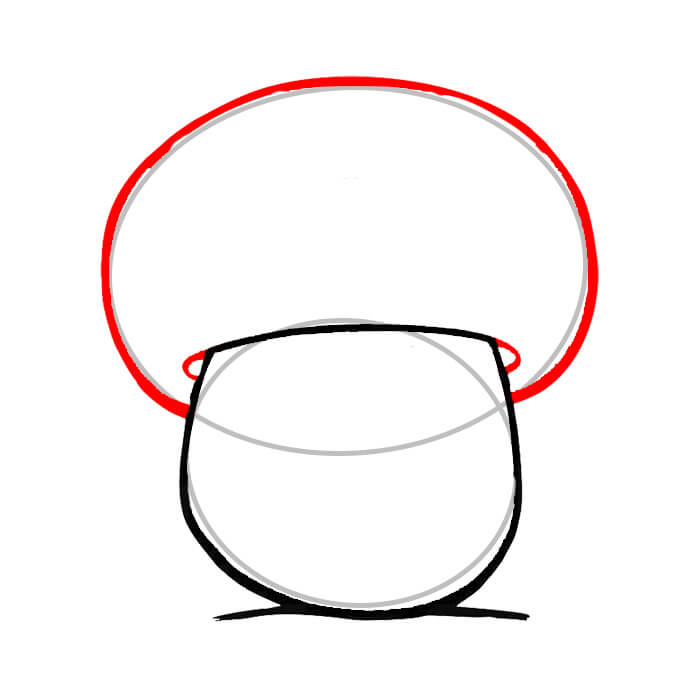Learn to draw a mushroom
Step-by-step drawing tutorial to draw a cute mushroom
Step 01:


Step 02:


Step 03:


Step 04:


Step 05:


Step 06:


Step 07:


Coloring:


Full step-by-step drawing:


How many types of mushrooms are there worldwide?
There are estimated to be around 2.2 to 3.8 million species of fungi worldwide, with only about 120,000 species formally described by scientists. This vast diversity encompasses a wide range of fungi, including yeasts, molds, and the mushrooms that many people are familiar with.
Interesting Facts About Mushrooms
- Diverse Species: Mushrooms come in a wide variety of shapes, sizes, and colors. From the giant puffball mushroom, which can grow up to 1.5 meters in diameter, to tiny mycorrhizal fungi that form symbiotic relationships with plant roots, the diversity is astounding.
- Edible and Medicinal: Many mushrooms are edible and highly nutritious, such as the common button mushroom, shiitake, and oyster mushrooms. Some mushrooms, like reishi and turkey tail, are known for their medicinal properties and are used in traditional medicine for their immune-boosting and anti-inflammatory benefits.
- Bioluminescence: Some mushrooms, like the ghost fungus (Omphalotus nidiformis) and the jack-o’-lantern mushroom (Omphalotus olearius), are bioluminescent, meaning they can produce their own light. This fascinating trait is thought to attract insects that help disperse their spores.
- Fungi and Ecosystems: Fungi play a crucial role in ecosystems as decomposers. They break down organic matter, recycling nutrients back into the soil, which supports plant growth. Some fungi form mycorrhizal associations with plants, improving water and nutrient uptake.
- Psychoactive Properties: Certain mushrooms, like Psilocybe species, contain psychoactive compounds such as psilocybin and psilocin. These mushrooms have been used in various cultural and religious rituals for centuries and are currently being studied for their potential therapeutic benefits in treating mental health conditions.
- Largest Organism: The largest organism on Earth is a fungus. The honey fungus (Armillaria ostoyae) in Oregon’s Malheur National Forest covers an area of over 2,385 acres and is estimated to be thousands of years old. This vast network of mycelium, the underground part of the fungus, makes it the largest known living organism by area.
- Symbiosis and Parasitism: Fungi can form various types of relationships with other organisms. Some fungi are mutualistic, forming beneficial associations with plants, while others are parasitic, such as the cordyceps fungus, which infects and eventually kills insects, emerging from their bodies to release spores.
- Culinary Delights: Truffles, a type of subterranean mushroom, are highly prized in culinary circles for their unique aroma and flavor. Truffle hunting is a traditional practice, often involving trained dogs or pigs to locate these valuable fungi.
- Environmental Indicators: Certain fungi are sensitive to environmental changes and can act as indicators of ecosystem health. The presence or absence of specific fungi can provide valuable information about pollution levels and soil conditions.
- Fungi in Biotechnology: Fungi have numerous applications in biotechnology, from producing antibiotics like penicillin to fermenting foods and beverages such as bread, beer, and cheese. They are also being explored for their potential in bioremediation, the process of using organisms to clean up environmental pollutants.






 Copyright ©2020 by EasyDrawEverything.Com
Copyright ©2020 by EasyDrawEverything.Com